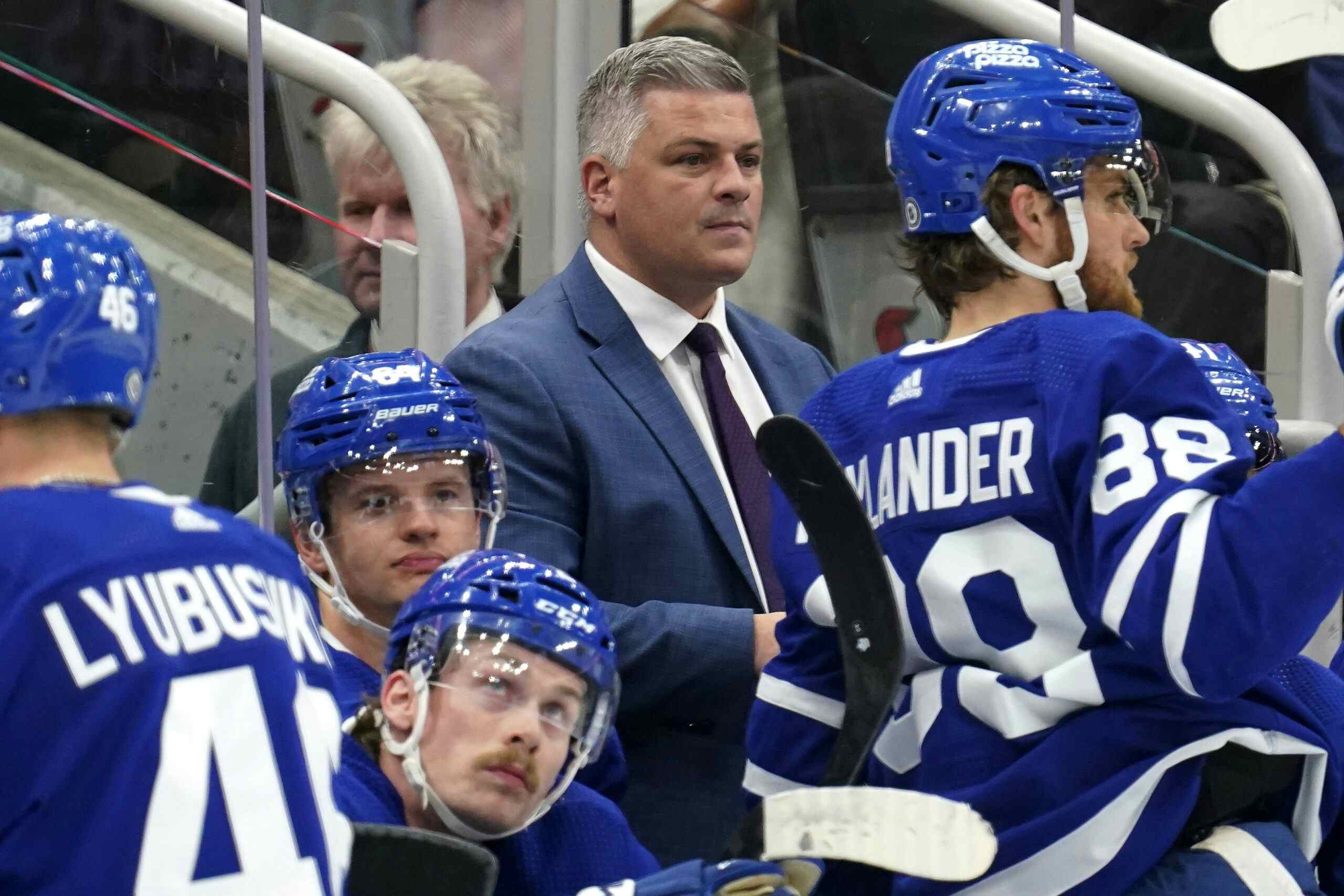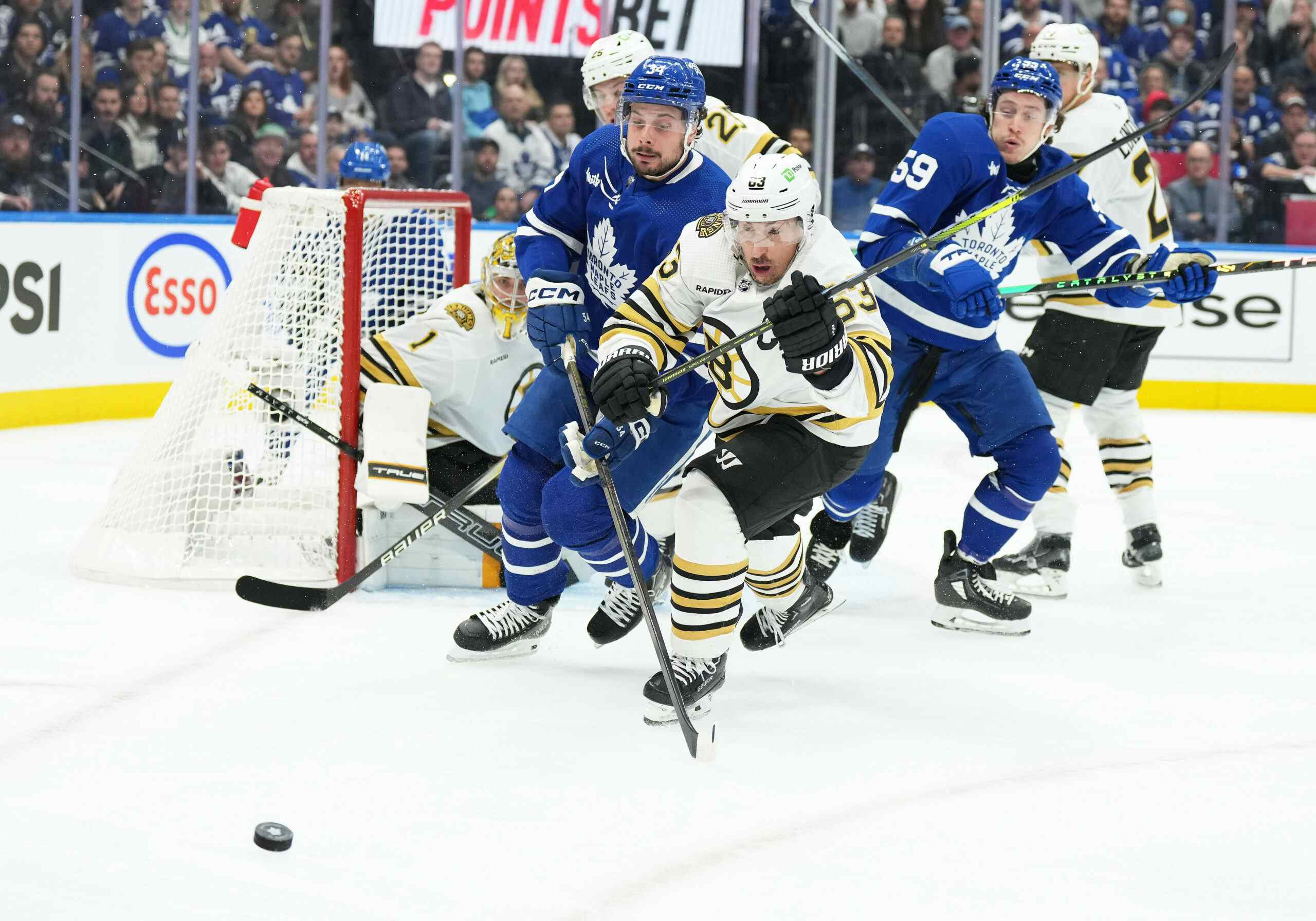Marlies Year In Review: Garret Sparks

Photo Credit: Christian Bonin/TSGPhoto.com
On Thursday, we kicked off our Marlies Year In Review series by looking at Antoine Bibeau, who was Toronto’s most frequently played goaltender in the regular season and playoffs. With that said, he wasn’t the one who reached the biggest heights; that would be Garret Sparks, who, with a couple of ups downs, had a breakthrough season.
The Storyline
This was the second consecutive season where Sparks went into camp as the presumptuous starter and the second consecutive season where that proved to not be the case.
Last year, he lost his spot to Christopher Gibson thanks to an injury in training camp and found himself starting for the Orlando Solar Bears once he was healthy. It wasn’t his ideal plan, but it was a good one for him; he was hands down the ECHL’s best goaltender and got regular starts.
This year, the team gave Bibeau the opening night start, and while he wasn’t great, he didn’t perform poorly enough to fall out of the rotation. The key word there was rotation; it took a five-goal night against Sparks for either of the two to get consecutive starts.
This could have been the blow that sent the year crashing down for him, but instead, Sparks made the most of his six days rest. He responded back with a 38-on-39 save performance against Grand Rapids and followed that up with a 30-save shutout against Hartford. He then took control of the pipes for the next two and a half weeks, putting up a few solid performances while Bibeau fell into a tailspin. Because of this, he was called up to the Leafs late in November to get a couple of games in.
Everyone knows the story there. He became the first Leafs goalie to ever get a shutout in his NHL debut on November 30th, and put together a decent, though not draw dropping run of form before suffering a groin injury on December 17th. Sparks went back to the Marlies after a 23-game absence in mid-January and sprinkled a few ugly performances into a sizable list of dominant ones; in his next 13 appearances, his save percentages were always under 0.865 or above 0.938. Sparks went back up to the Leafs at the deadline and fared worse than his first time around; something that was probably frustrating to him, but, in hindsight, was a part of the reason he’ll have a fellow American as a phenom teammate the next time he’s up with the big club.
Sparks was largely left out of the Calder Cup playoffs, starting just three of the fifteen games and coming into two in relief. He put up a shutout in Game 2 against Bridgeport, stopped all 12 when he came in for Antoine Bibeau in their Game 3 comeback, and stopped 27 of 29 in Game 1 of the Albany series. But from there, he was left out until Game 2 against Hershey, where he allowed 20 of 23 and was hung out to dry in the back third of the 8-0 blowout in Game 3.
The Eyeballs
Much like Bibeau, consistency seemed to be an issue with Sparks. His peaks were utterly dominant; a game stealer at his finest. But there were four games this year where he allowed five or more goals and had the opposite effect on his game. Looking at how things went during his Leafs stint, I’m curious as to whether playing through injury recovery has something to do with it, and that if off nights can at least somewhat be explained by groin pain.
From a technical perspective, Sparks plays a non-traditional hybrid game, self-designed and optimized by Marlies goaltending coach Piero Greco. This is done primarily to reduce wear-and-tear on the body; I’d go into more detail about it, but I’m far from an expert. Sparks’ guest post here on TLN, on the other hand, goes into that level of detail.
Something I noticed this year was that, even in those nights where he struggled, he wasn’t prone to being pulled from the game. Sheldon Keefe had little hesitance in pulling Bibeau, but Sparks only had his night end early once this year; a loss to the Hershey Bears on February 26th, where he allowed 3 goals on 11 shots.
The Box Scores

Even when Sparks faltered, his long-term outlook was still exemplary at this level. At no point this year did his ten-game save percentage drop below 0.916. This means that at his absolute worst stretch, he still outperformed Bibeau’s entire December-to-May “reclamation party”. Sparks’ best AHL stretch was between November 4th and January 27th; he was a 0.945 over those ten games, three of which were shutouts and one more was a perfect relief appearance.
Sparks is interesting in the sense that he responds well to adversity. 30.7% (8 of 26) of his appearances were below a 0.889 save percentage, but he was 0.929 in the games that followed. He performed best when on two game’s rest; a situation that implies confidence in the other goaltender. As far as days went, he performed best when he had between 4-6 days off, which fits right into the AHL schedule.
Sparks performed best in games when he faced 31-40 shots (0.940), but faltered as the workload increased into the high 40’s (small sample, though; it happened twice and one was a six-goal blowout). Sparks faced an average of 31.3 shots per 60 minutes; two full extra pucks more than Bibeau.
Generally, though, he was dominant. half of his games saw him put up at least a 0.950 save percentage; 62% of them saw him put up at least a 0.930. The big losses are definitely something to work on, but the end result was good. Sparks was 230 minutes away from the minimum ice time cutoff (1440 minutes) for league leaderboards, but had he kept up his 0.928 pace, he would have finished behind only Matt Murray (0.931) and Peter Budaj (0.932) in the statistic. Sparks’ first four appearances in the playoffs brought him to 0.930 through 1426 minutes and while being the sacrificial lamb in that last Hershey game hurt him a bit, he still finished as a 0.926 on the year.
Looking Ahead
This is the second consecutive year where Sparks has put up immensely good numbers for his main league; both age-relative and in general. There’s no doubt that the team picked up more talent than they expected from their 2011 7th Round Pick, but it’s going to be interesting to see where they go from here.
Many feel that his late-season stretch with the Leafs wasn’t him playing up to his potential and that he deserves another shot up with the team. I wouldn’t be against the idea if a cost-effective veteran proves too difficult to find; a healthy Sparks appears to be a good one, and even in the NHL he can likely at least be decent.
But at the same time, “healthy” is the key word there. Sparks has had more than a few issues with his lower-body in the past couple of years and problems have continued to appear even with his stylistic shift. Since going pro, the 44 combined appearances he made across three leagues in the regular and postseason this year are his highest, and while they’ve been good ones, you wonder if he’s setting himself up to max out as a super-backup like his friend Scott Darling in Chicago. Certainly, having a goalie who can put up good numbers for 20-25 games is far from a bad thing, but as Toronto struggles to find it’s goalie of the future, the expectation is a little higher than that.
Sparks is a restricted free agent at the end of the month. One would suspect that Toronto will qualify him, sign him pretty quickly to a low-cost, shorter term deal, and then make a decision whether he’ll get to be the Leafs backup or try once again to the Marlies’ starter.
Previous Profiles
Recent articles from Jeff Veillette





